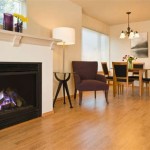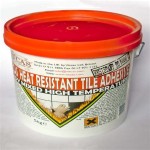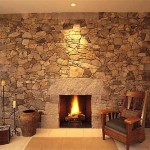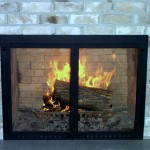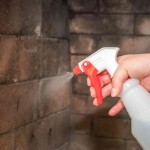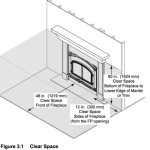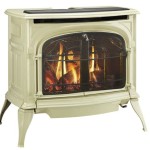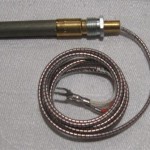Rocks for Gas Fireplace: A Comprehensive Guide
Gas fireplaces offer a convenient and efficient alternative to traditional wood-burning fireplaces. A key element of their aesthetic appeal is the material used to simulate the look of a real fire. While gas logs are the most common choice, decorative fireplace rocks provide a unique and customizable look. This article explores various types of rocks suitable for gas fireplaces, considerations for selection, installation guidelines, and safety precautions that must be followed.
Understanding the Purpose of Rocks in a Gas Fireplace
The primary functions of rocks in a gas fireplace extend beyond mere aesthetics. They play a crucial role in heat distribution, flame appearance, and overall fireplace functionality. Rocks placed strategically around the gas burner help to radiate heat more evenly into the room. The irregular shapes and textures of the rocks create turbulence in the gas flow, influencing the shape and appearance of the flames, resulting in a more realistic and visually appealing fire.
Furthermore, fireplace rocks help to protect the burner from direct exposure to the flames, potentially extending its lifespan. They also provide a barrier against any accidental spills or debris that might fall into the burner area. The overall effect is a more efficient, safer, and visually appealing gas fireplace experience.
Types of Rocks Suitable for Gas Fireplaces
Several types of rocks are specifically designed and approved for use in gas fireplaces, each with its own characteristics and aesthetic qualities. It is crucial to use only approved materials, as some natural rocks and stones can explode or emit toxic fumes when heated.
Lava Rocks: Lava rocks are a porous type of volcanic rock that is commonly used in gas fireplaces. Their porous structure allows them to absorb and radiate heat effectively. They are available in various sizes and colors, ranging from black and gray to reddish-brown. Lava rocks offer a natural and rugged appearance, making them a popular choice for creating a rustic fireplace ambiance. They are generally considered a safe and durable option, resistant to cracking and crumbling under high temperatures. However, it's important to ensure that lava rocks are thoroughly cleaned before use to remove any dust or debris that could interfere with the gas flow or create unwanted odors.
Fire Glass: Fire glass is a highly reflective and decorative alternative to traditional fireplace rocks. It is typically made from tempered glass, which is specifically designed to withstand high temperatures without melting, discoloring, or emitting harmful chemicals. Fire glass comes in a wide array of colors, shapes, and sizes, allowing for a high degree of customization. Its reflective surface enhances the flame's appearance, creating a dazzling and modern aesthetic. When selecting fire glass, it is critical to choose a product specifically labeled for use in gas fireplaces and to avoid using recycled or non-tempered glass, which could shatter or crack under heat.
Ceramic Stones: Ceramic stones are another synthetic option that offers a realistic and uniform appearance. They are often designed to resemble natural river stones or pebbles and are available in various colors and sizes. Ceramic stones are heat-resistant and durable, making them a safe and long-lasting choice for gas fireplaces. They provide a clean and contemporary look and are easy to arrange and maintain. Like other fireplace rock options, it is important to ensure that the ceramic stones are specifically manufactured for gas fireplace use.
Other Approved Materials: While lava rocks, fire glass, and ceramic stones are the most common options, some manufacturers offer alternative rock-like materials that are specifically engineered for gas fireplaces. These materials may be made from composite materials or other heat-resistant substances and are designed to provide unique textures and appearances. Before using any alternative material, it is essential to consult the fireplace manufacturer's instructions to ensure that it is compatible and safe for use.
Factors to Consider When Selecting Fireplace Rocks
Choosing the right type of rocks for a gas fireplace involves considering several factors, including appearance, safety, compatibility, and cost.
Aesthetic Preferences: The desired look and feel of the fireplace is a primary consideration. Whether a rustic, modern, or contemporary aesthetic is preferred will significantly influence the choice. Lava rocks offer a natural and rugged appearance, while fire glass provides a more modern and dazzling effect. Ceramic stones can be used to create a clean and uniform look.
Safety and Compatibility: It is paramount to only use rocks that are specifically designed and approved for use in gas fireplaces. Using unapproved materials can be dangerous and could potentially damage the fireplace or pose a safety hazard. Check the fireplace manufacturer's instructions for a list of approved materials. Ensure that the selected rocks are compatible with the fireplace's burner system and that they will not obstruct the gas flow or interfere with its operation. The rocks should be able to withstand the high temperatures produced by the fireplace without cracking, crumbling, or emitting harmful fumes.
Size and Quantity: The size and quantity of rocks needed will depend on the size and design of the fireplace. Overcrowding the burner area with too many rocks can restrict gas flow and reduce the effectiveness of the fireplace. Conversely, using too few rocks may not provide adequate heat distribution or flame enhancement. Follow the fireplace manufacturer's recommendations for the appropriate amount of rock to use. Consider the size of the individual rocks as well. Larger rocks may be more suitable for larger fireplaces, while smaller rocks may be better suited for smaller units.
Maintenance and Durability: Consider the maintenance requirements of the different types of rocks. Lava rocks may need occasional cleaning to remove dust and soot that can accumulate over time. Fire glass can be easily cleaned with a mild detergent and water. Choose a durable rock type that will not easily crumble or break down under the high temperatures of the fireplace. The lifespan of the rocks will depend on the material and usage, but properly maintained fireplace rocks can last for many years.
Cost Considerations: The cost of fireplace rocks can vary significantly depending on the type, size, and quantity. Fire glass tends to be more expensive than lava rocks, while ceramic stones may fall somewhere in between. Consider the total cost of the rocks, including any shipping or handling fees. While it may be tempting to opt for the cheapest option, it is important to prioritize safety and quality over cost. Investing in high-quality, approved fireplace rocks will ensure a safe and long-lasting fireplace experience.
Installation and Arrangement of Fireplace Rocks
Proper installation and arrangement of fireplace rocks are crucial for ensuring optimal performance and safety. Always consult the fireplace manufacturer's instructions before beginning the installation process.
Safety Precautions: Before working on the gas fireplace, ensure that the gas supply is turned off and that the fireplace is completely cool. Wear gloves and safety glasses to protect your hands and eyes from any debris or sharp edges. Work in a well-ventilated area to avoid inhaling any dust or fumes. If you are unsure about any aspect of the installation process, consult a qualified gas fireplace technician.
Cleaning and Preparation: Before placing the rocks in the fireplace, clean them thoroughly to remove any dust, dirt, or debris. This can be done by washing them with mild detergent and water and allowing them to dry completely. Clean the fireplace burner area to remove any loose debris or soot. Inspect the burner for any signs of damage or corrosion and repair or replace it as needed.
Arrangement Techniques: Arrange the rocks around the burner in a way that allows for proper gas flow and flame distribution. Avoid overcrowding the burner area with too many rocks, as this can restrict gas flow and reduce the effectiveness of the fireplace. Leave some space between the rocks to allow the flames to breathe and create a more natural-looking fire. Experiment with different arrangements to achieve the desired aesthetic effect. Consider layering the rocks to create depth and visual interest. Place larger rocks towards the back of the fireplace and smaller rocks towards the front. Avoid placing any rocks directly on top of the burner or gas line, as this could obstruct the gas flow or damage the components.
Testing and Adjustments: After arranging the rocks, turn on the gas supply and ignite the fireplace. Observe the flames to ensure that they are burning evenly and consistently. Adjust the arrangement of the rocks as needed to achieve the desired flame appearance and heat distribution. If the flames are too small or uneven, try removing some rocks or repositioning them around the burner. If the flames are too large or erratic, try adding more rocks to restrict the gas flow.
Regular Maintenance: Over time, fireplace rocks may accumulate dust and soot, which can affect their appearance and performance. Clean the rocks regularly with a soft brush or vacuum cleaner to remove any debris. Inspect the rocks for any signs of damage or deterioration and replace them as needed. Schedule regular maintenance checks of the gas fireplace to ensure that all components are working properly and safely.
Safety Considerations When Using Rocks in a Gas Fireplace
Prioritizing safety is paramount when using any type of rocks in a gas fireplace. Understanding potential hazards and adhering to safety guidelines is crucial for preventing accidents and ensuring a safe and enjoyable fireplace experience.
Use Only Approved Materials: The most important safety precaution is to use only rocks and materials that are specifically designed and approved for use in gas fireplaces. Unapproved materials can explode, emit toxic fumes, or damage the fireplace. Check the fireplace manufacturer's instructions for a list of approved materials. Never use rocks or stones collected from outdoors, as they may contain moisture or impurities that can cause them to explode when heated.
Proper Ventilation: Ensure that the gas fireplace is properly vented to the outside. This will prevent the buildup of carbon monoxide, a colorless and odorless gas that can be deadly. Install a carbon monoxide detector in the home to alert you to any potential leaks. Schedule regular inspections of the fireplace and venting system to ensure that they are functioning properly.
Avoid Overcrowding: Avoid overcrowding the burner area with too many rocks, as this can restrict gas flow and create a dangerous buildup of gas. Follow the fireplace manufacturer's recommendations for the appropriate amount of rock to use. Ensure that the rocks are arranged in a way that allows for proper gas flow and flame distribution.
Keep Flammable Materials Away: Keep flammable materials, such as curtains, furniture, and paper, away from the fireplace. Maintain a safe distance between the fireplace and any combustible materials to prevent fires. Never use the fireplace to burn trash or other materials.
Supervise Children and Pets: Supervise children and pets when the fireplace is in use. Teach children about fire safety and instruct them to never touch the fireplace or play with the rocks. Keep pets away from the fireplace to prevent them from getting burned or knocking over the rocks.
By following these safety guidelines, one can enjoy the beauty and warmth of a gas fireplace safely and confidently. Regular maintenance and inspections will further ensure the continued safe operation of the fireplace for years to come.

Lava Rock Vs Fire Glass Blog Fireplace And Chimney Authority

Rh Peterson River Rocks For Gas Log Set 5 Mazzeo S Stoves Fireplaces

Fire Pit Media Lava Rock Glass Woodlanddirect Com

Lava Rock Vs Fire Glass Blog Fireplace And Chimney Authority

Lava Rock 10 Things To Know About Fire Pit Rocks Buyer S Guide 2024

Fireplaceinsert Com Peterson Real Fyre Vented Contemporary Gas Set River Rocks

Manchester Oak Gas Logs Cyprus Air Fireplaces Va Md Dc

Allen Roth Vented Or Vent Free Gas Log Embers In The Fireplace Accessories Department At Com

Chaska 34 Rock Kozy Heat Fireplaces

River Rock Gas Fireplace Fireplaces
Related Posts

